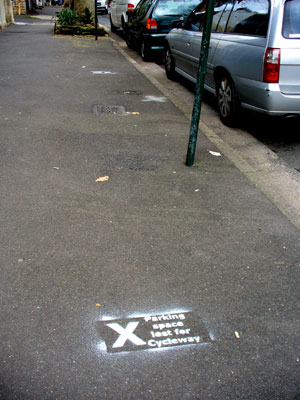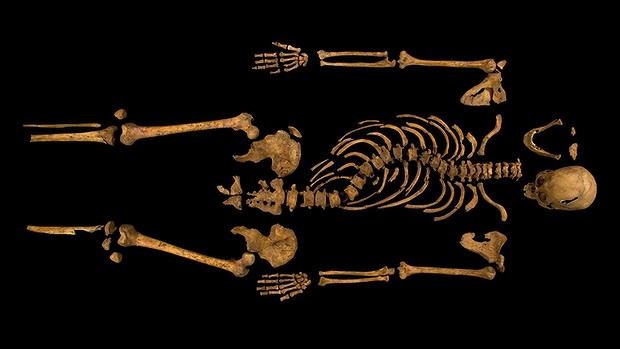How hotly motorists defend parking spaces as cities become more and more congested with cars. Loss of street parking is one of the major objections to the creation of cycle paths like the one in Bourke Street in Sydney’s inner city.

Parking space lost for cycleway. One of a series of stencils applied to the pavement in June 2009, this one is outside the Bourke Street Bakery. Despite objections construction of the cycleway went ahead anyway. Photo: meganix.
So the citizens of the city of Leicester in the UK must have had mixed feelings when a team of archaeologists started digging up a council car park a year ago. How many parking spaces were lost in that exercise? But today’s exciting news is that the remains discovered have been positively identified as those of medieval king Richard III, seriously maligned in Shakespeare’s eponymous play, and the last king of England to die in battle.

The skeleton of Richard III, with its twisted spine, which was discovered at the Grey Friars excavation site in Leicester. Photo: University of Leicester/Reuters, accessed via the Sydney Morning Herald website.
Asphalt paving is like a tombstone, not only over the remains of the famous like King Richard, but over the bodies of ordinary folk and indigenous people whose life and death resting places were overtaken by the establishment and expansion of cities. It is something I talk about in my article City of epitaphs in Culture Unbound 1: 453-467 (2009).



























